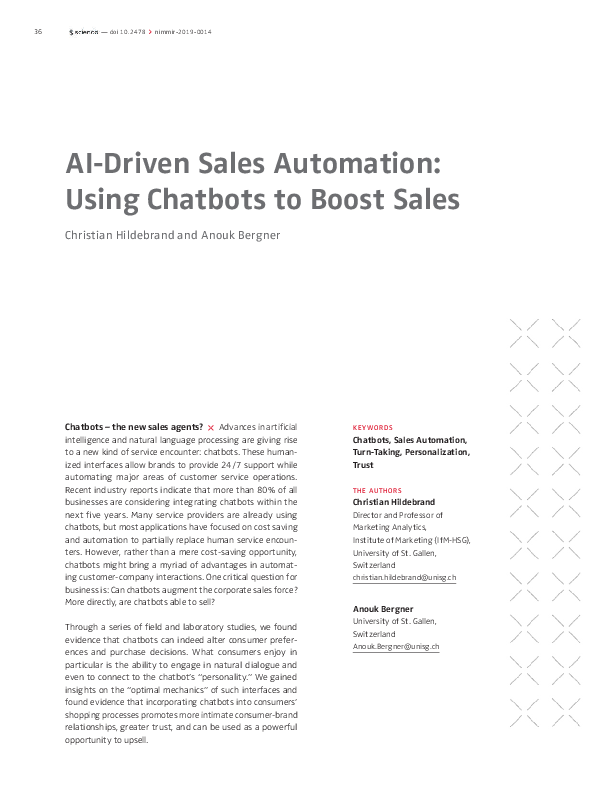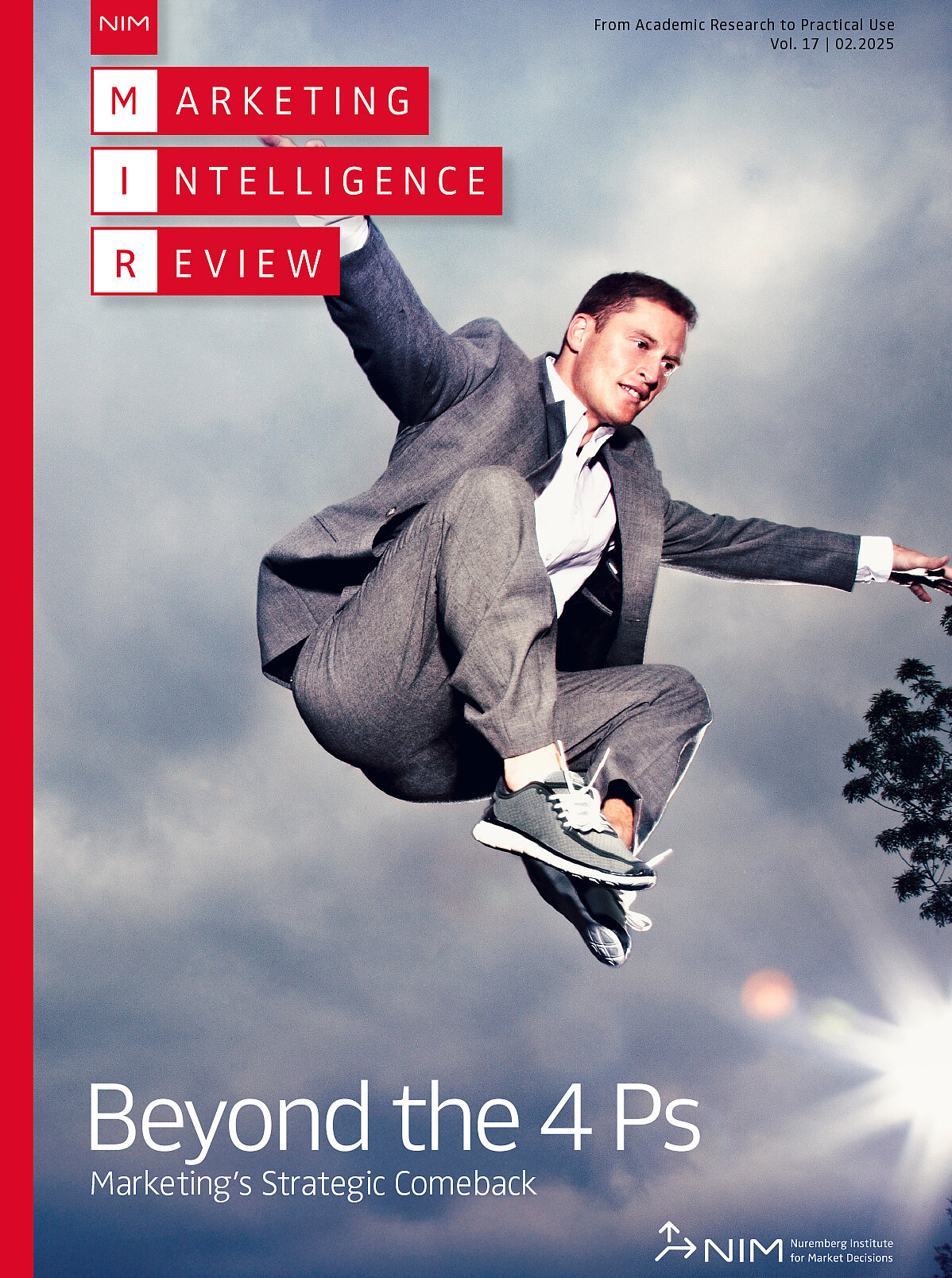AI-Driven Sales Automation: Using Chatbots to Boost Sales
Christian Hildebrand and Anouk Bergner
The implementation of bot interfaces varies tremendously in current industry practice. They range from the human-like to those that merely present a brand logo or a digital avatar. Some applications provide a maximum amount of information with limited turn-taking between the user and the interface; others offer only short pieces of information and require more turn-taking. Instead of simply implementing the default option provided by chatbot providers and platforms, companies should consider very carefully how the specifics of the chatbot interface might affect the user experience. Simple mechanics such as increasing the frequency of interactions leads to greater trust and a more enjoyable user experience. Also, personalizing chatbots with basic consumer characteristics such as gender increases trust and improves the perceived closeness between the customer and the chatbot – and ultimately the brand. Brand managers should therefore consider chatbots not as merely another digital marketing fad or a way to save costs through service automation. When implemented wisely, they are even able to increase a company’s upselling potential.

![[Translate to English:] [Translate to English:]](/fileadmin/_processed_/e/e/csm_hildebrand_intro_ai_vol_11_no_2_de_1e0479d1e9.png)
![[Translate to English:] [Translate to English:]](/fileadmin/_processed_/3/7/csm_2019_nim_mir_ai_de_res__Kapitel_1__2fa844ec2e.png)
![[Translate to English:] [Translate to English:]](/fileadmin/_processed_/f/1/csm_2019_nim_mir_ai_de_res__Kapitel_2__52310f2f29.png)
![[Translate to English:] [Translate to English:]](/fileadmin/_processed_/2/e/csm_2019_nim_mir_ai_de_res__Kapitel_3__b6b9b04ed2.png)
![[Translate to English:] [Translate to English:]](/fileadmin/_processed_/d/5/csm_2019_nim_mir_ai_de_res__Kapitel_5__5621369382.png)
![[Translate to English:] [Translate to English:]](/fileadmin/_processed_/8/4/csm_taylor_ai_vol_11_no_2_eng_6d2c64d841.png)
![[Translate to English:] [Translate to English:]](/fileadmin/_processed_/c/2/csm_2019_nim_mir_ai_de_res__Kapitel_6__ce9e09e186.png)


